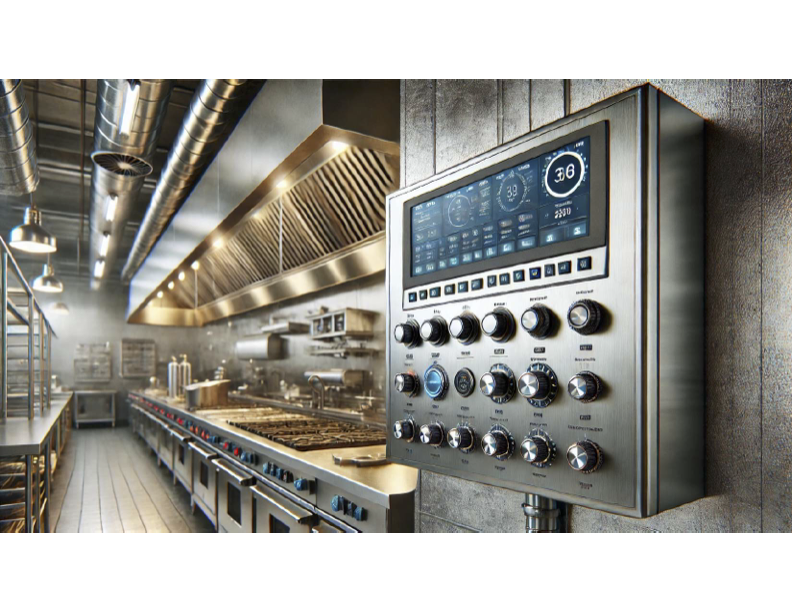Introduction
In a commercial kitchen, ventilation plays a crucial role in maintaining a safe and efficient working environment. The control panel is the heart of the ventilation system, providing operators with the ability to regulate airflow, manage exhaust and supply fans, and ensure compliance with safety regulations. This blog explores the significance of control panels in commercial kitchen ventilation systems, their features, and how they contribute to operational efficiency.
What Is a Commercial Kitchen Ventilation Control Panel?
A commercial kitchen ventilation control panel is an interface that allows kitchen staff to manage and monitor the ventilation system. It integrates various components such as exhaust fans, supply air units, and fire suppression systems to create a seamless and automated solution for air management. These control panels come in different configurations, from basic manual switches to advanced touchscreen interfaces with remote monitoring capabilities.
Key Features of Kitchen Ventilation Control Panels
-
Fan Speed Control: Adjustable speed settings for exhaust and supply fans allow for energy efficiency and customized airflow based on kitchen operations.
-
Temperature and Humidity Monitoring: Real-time tracking of kitchen conditions ensures optimal air quality and prevents excessive heat buildup.
-
Automated Operation: Smart sensors detect cooking activity and adjust ventilation accordingly, reducing energy waste and maintaining a comfortable work environment.
-
Fire Suppression Integration: In case of a fire, the control panel can automatically shut down fans and activate fire suppression systems to contain the situation.
-
Remote Access and Monitoring: Advanced control panels come with IoT-enabled features, allowing managers to monitor and adjust settings from a smartphone or computer.
-
Alarms and Notifications: Alerts for system malfunctions, clogged filters, or ventilation failures help prevent costly downtime and ensure compliance with health regulations.
Benefits of Using an Advanced Control Panel
-
Improved Air Quality: By maintaining proper airflow, control panels help eliminate smoke, grease, and odors, creating a healthier work environment.
-
Energy Efficiency: Smart controls optimize ventilation use, reducing electricity costs without compromising performance.
-
Compliance with Regulations: Automated systems ensure adherence to health and safety codes, preventing potential fines or shutdowns.
-
Enhanced Safety: Integrated fire suppression and emergency shutdown functions enhance kitchen safety.
-
Operational Convenience: With digital interfaces and remote access, kitchen managers can easily adjust settings and monitor system performance.
Choosing the Right Control Panel for Your Kitchen
When selecting a control panel for your commercial kitchen, consider the following factors:
-
Kitchen Size and Type: Larger kitchens or those with high heat output may require more advanced control systems.
-
Automation Needs: Determine whether you need a simple switch-based system or a fully automated, sensor-driven panel.
-
Compatibility: Ensure the control panel integrates seamlessly with existing ventilation and fire suppression systems.
-
Ease of Use: A user-friendly interface is essential for quick adjustments and troubleshooting.
-
Reliability and Durability: Choose a panel from a reputable manufacturer with a proven track record in the industry.
Conclusion
A well-designed control panel is essential for maintaining efficient and safe ventilation in a commercial kitchen. By investing in an advanced control system, businesses can optimize energy usage, enhance air quality, and ensure compliance with safety standards. Whether you run a small café or a large-scale restaurant, choosing the right control panel can significantly impact kitchen operations, staff comfort, and overall efficiency.

